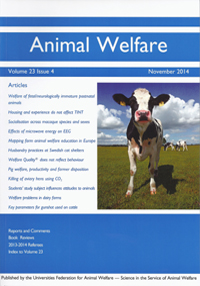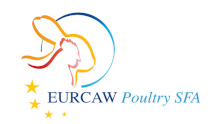Document type : Scientific article published in Animal Welfare
Authors: K. Ellingsen-Dalskau, K, K. R. Dean, T. Rousing
Preview: Human approach tests are generally accepted as valid measures of the Human-animal relationshipsshipsship and hence are widely included in on-farm welfare assessment protocols. Most measures of avoidance response to human approach in production animals have been developed and tested under experimental conditions rather than on commercial farms, thereby making the results less relevant for operational on-farm animal welfare assessment. By contrast, the current study was conducted on calves in their home pens. On 110 Norwegian dairy farms, 548 group-housed calves (aged 22 288 days) were tested individually for their behavioural response to an unfamiliar human approach by a single test person. To conduct the test, the respective calf manager administered concentrates to the manger, followed by the test person who approached each animal in turn in a standardised manner. The avoidance response of the individual calf was categorised as 0 to 5 (maximal to no avoidance) in reaction to an attempted approach and head touch by the test person. The statistical analyses showed that heifer calves were more avoidant compared to bull calves, as were younger bulls compared to older bulls, and that overall avoidance increased in calves that were not tested first.




